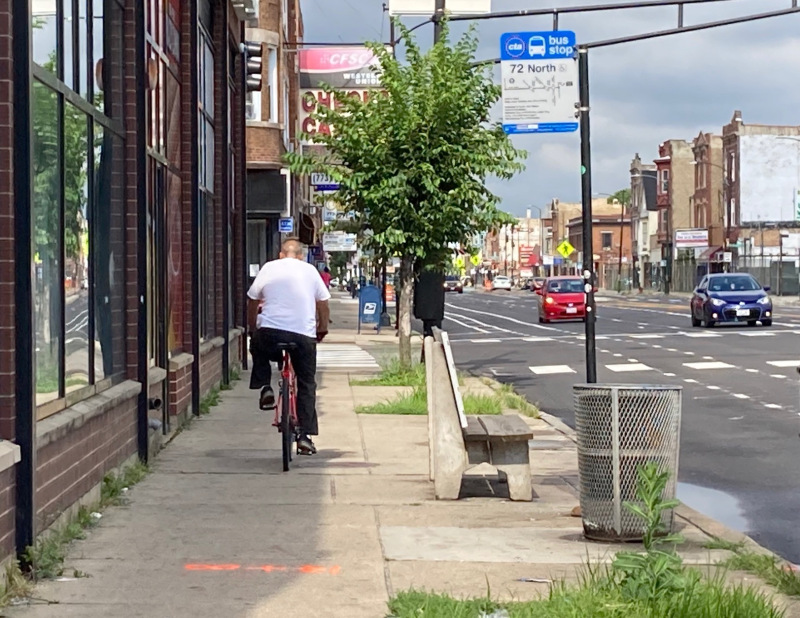Alongside an increase in suffering and death due to COVID-19, the United States has recently experienced another pandemic: an increase in traffic deaths. Despite a decrease in miles driven, last year the nation saw the highest number of traffic deaths in thirteen years. Fatalities increased by seven percent between 2019 and 2020, likely due to an increase in speeding caused by less traffic congestion.
For the past few decades the United States has been an outlier compared to other industrialized countries when it comes to traffic deaths. Finally, some federal action is happening to address this problem. The Senate recently passed an infrastructure bill that would provide $5 billion in funding for a “Safe Streets For All” program. However, some advocates question how far the initiative will go, given that 20 times as much money is budgeted for road and highway building.
Here in Illinois, 2020 saw the most traffic fatalities in the past decade. Statewide, deaths increased by 16 percent between 2019 and 2020. Tragically here in Chicago, on-street fatalities spiked by a full 45 percent last year.
Despite the increase in traffic deaths, there’s glimmer of hope that things will get better in Illinois. During the last state legislative session, state representatives unanimously passed SB 1791, a bill with the goal of reducing pedestrian fatalities on state roads. The legislation was introduced by Senator Laura Murphy of Des Plaines, and signed by Governor J.B. Pritzker earlier this week.
SB 1791 mandates that the Illinois Department of Transportation conduct a traffic study following “the occurrence of any [crash] involving a pedestrian fatality that occurs at an intersection of a state highway. The study shall include, but not be limited to, consideration of alternative geometric design improvements that the Department deems necessary.” IDOT will be required to make the results of the study available to the public on its website.
I reached out to the Active Transportation Alliance for their thoughts on the bill. According to a statement from the advocacy groups, ATA recognizes the need to focus on state roads given that “many of the most dangerous roads in the Chicago region and across Illinois are state-controlled arterial streets with lots of high-speed car and truck traffic. These streets need to be right-sized to prevent crashes and save lives, particularly for the most vulnerable people walking and biking. Hopefully this bill and the resulting studies will further demonstrate this need.”
Senator Murphy told Streetsblog she was spurred to take action after several crashes in her district. “One person was maimed to the point they can no longer work. I figured this bill would be a good step towards identifying how we can prevent these crashes in the future.”
Murphy said she collaborated with IDOT to craft and pass the legislation. “We brought together multiple stakeholders. This bill was formed in partnership with IDOT. This is a good start.”
The senator added that she would have liked to have require IDOT make immediate safety improvements to dangerous intersections, “but this is a start towards identifying the issue and eventually making our communities more pedestrian-friendly.”
SB 1791 is an imperfect start on the road to decreasing traffic crashes. I have a few issues with the bill. I am a bit disappointed that the word “accident” is contained within the text of the law compared to Vision Zero language that uses the word “crash” to illustrate that injuries and death involving cars are preventable.
I initially was concerned that SB1791 doesn’t include explicit language to include cyclists who are also at risk on our roads. When I reached out to Senator Murphy’s office for clarification as to whether or not cyclists are covered under SB1791, I was told that cyclists are covered as well.
And while the mandate to conduct a traffic study sounds good, it ignores the larger issue of the engineering formulas used to design our roads. Oftentimes these formulas put driver convenience and speed ahead of safety for all road users. It will be interesting to read these traffic study reports from IDOT and see their recommendations.
Lastly, there’s no funding mechanism attached to the bill to ensure that corrections are made to prevent future crashes. Perhaps traffic safety advocates can push for state funding during the next legislative cycle.






